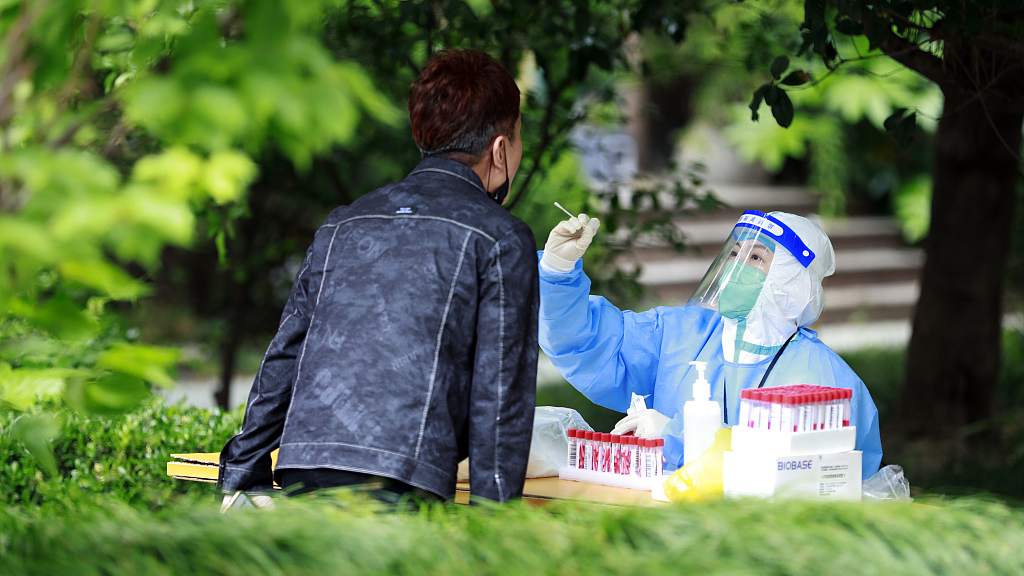
A health professional takes a nucleic acid sample from a resident of Changning District in Shanghai Municipality, China, May 10, 2022. /CFP
A health professional takes a nucleic acid sample from a resident of Changning District in Shanghai Municipality, China, May 10, 2022. /CFP
A new study based on an Omicron variant transmission model has shown that China would risk a deluge of infections that could cause over a million deaths if the country abandons its dynamic zero-COVID policy.
The study, led by China's Fudan University with scientists from China and the U.S., estimated that an Omicron wave would result in 112 million symptomatic infections, 2.7 million intensive care admissions (15.6 times the existing capacity) and almost 1.55 million fatalities between May and July in China without the country's dynamic-zero-COVID policy. The related paper was published on the website of the international journal Nature Medicine Tuesday.
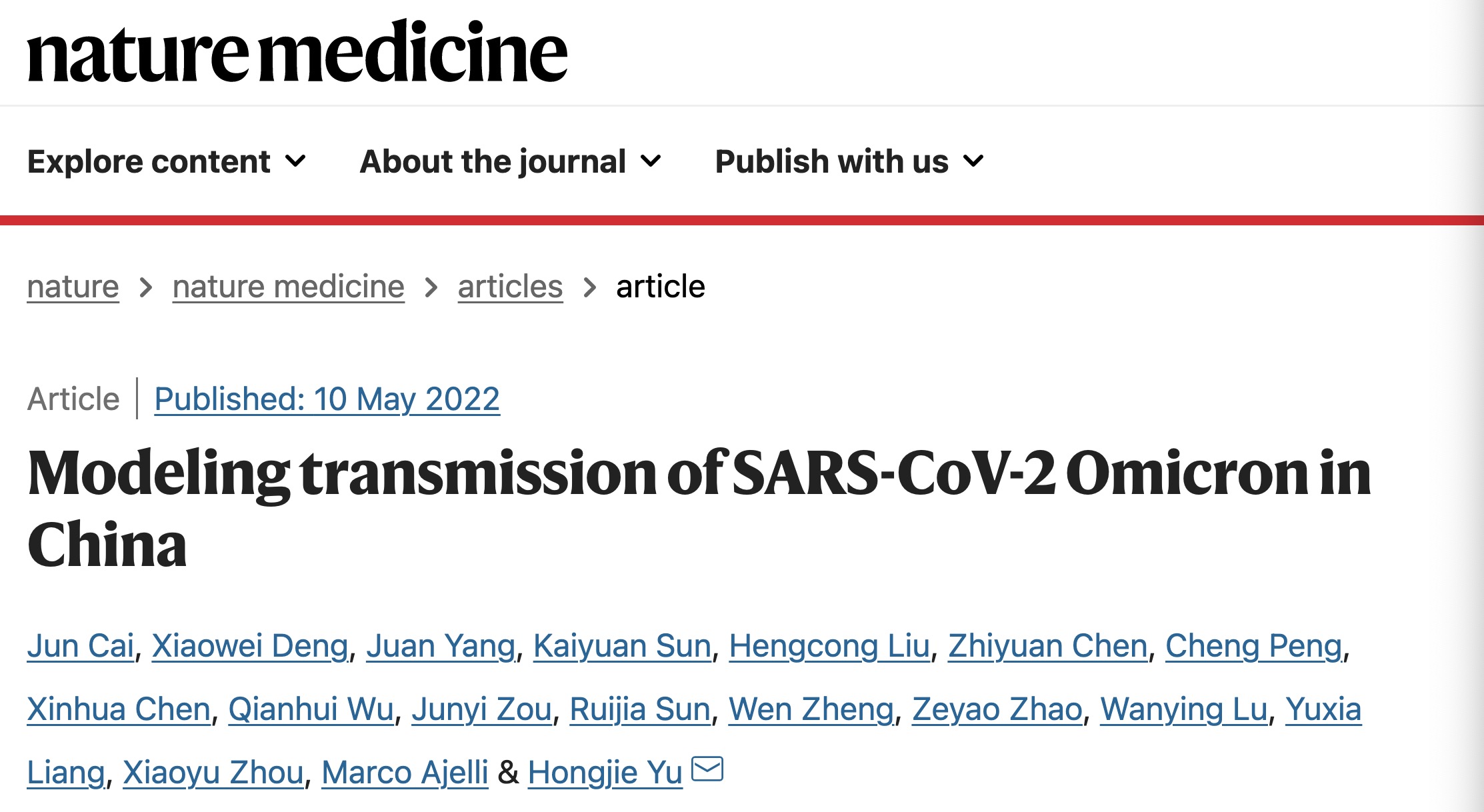
Screenshot of the article published on Nature Medicine.
Screenshot of the article published on Nature Medicine.
The research team developed an age-structured stochastic compartmental susceptible-latent-infectious-removed-susceptible (SLIRS) model of SARS-CoV-2 transmission calibrated on the initial growth phase for the 2022 Omicron outbreak in Shanghai.
This mathematical model on infection rates looked at the situation in China as a whole and separately in Shanghai Municipality and China's Shanxi and Shandong provinces to project the COVID-19 burden if the dynamic zero-COVID policy hadn't been adopted. It focused on cases, patients requiring hospitalization and intensive care, and deaths, using hypothetical mitigation scenarios.
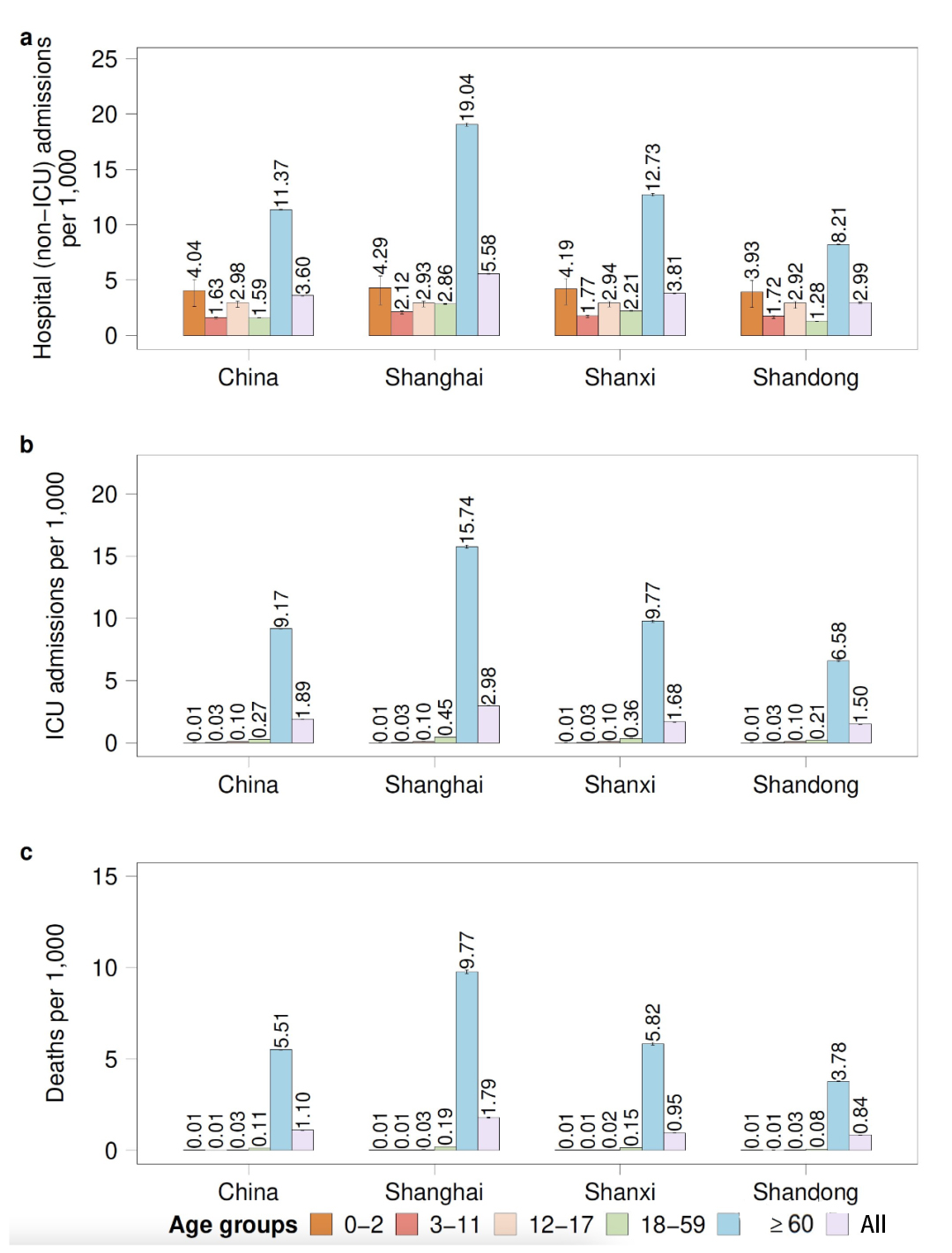
Graphic looks at probable COVID-19 situations in China as a whole, Shanghai Municipality, and Shanxi and Shandong Provinces during the 2022 Omicron outbreak if dynamic zero-COVID policy hadn't been adopted.
Graphic looks at probable COVID-19 situations in China as a whole, Shanghai Municipality, and Shanxi and Shandong Provinces during the 2022 Omicron outbreak if dynamic zero-COVID policy hadn't been adopted.
The model also considers age-specific vaccine coverage data, vaccine efficacy against different clinical endpoints, waning immunity, antiviral therapies, and non-pharmaceutical interventions.
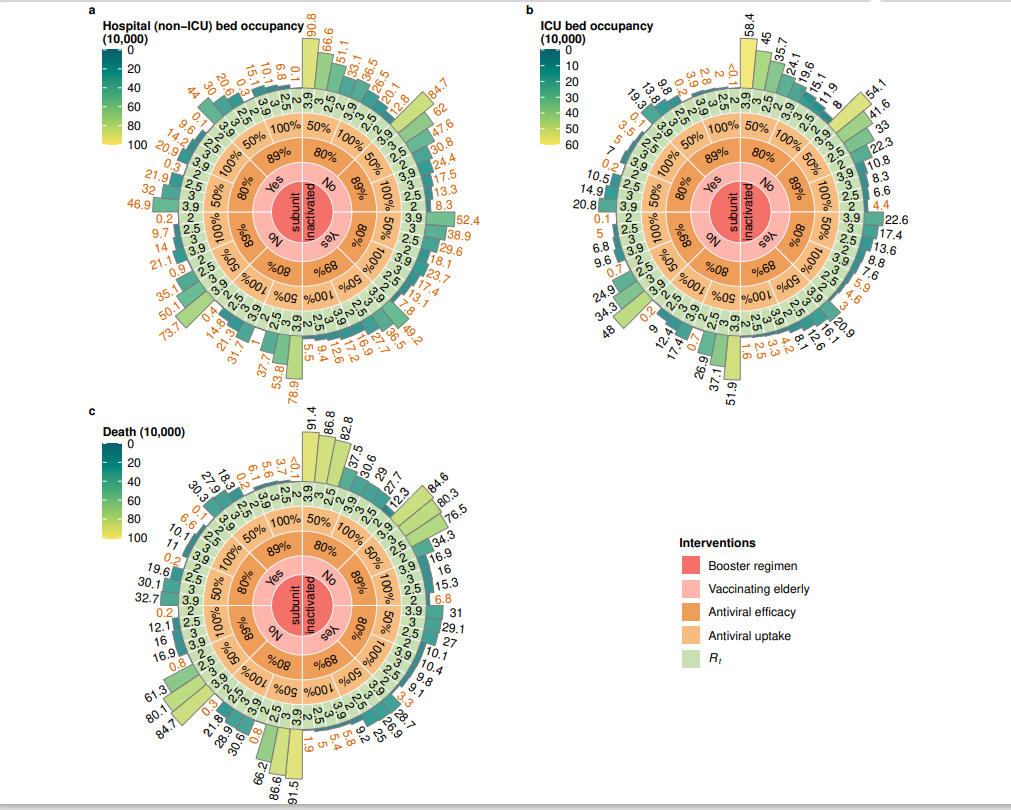
Graphic predicts hospital, ICU and deaths in China during 2022 Omicron outbreak if dynamic zero-COVID policy hadn't been adopted.
Graphic predicts hospital, ICU and deaths in China during 2022 Omicron outbreak if dynamic zero-COVID policy hadn't been adopted.
The scientists found that the level of immunity induced by the March 2022 vaccination campaign would be insufficient to prevent an Omicron wave. They said such a wave would exceed critical care capacity, with intensive care unit peak demand at 15.6 times the existing capacity, and cause about 1.55 million deaths.
(All graphics courtesy of Fudan University Research Team)
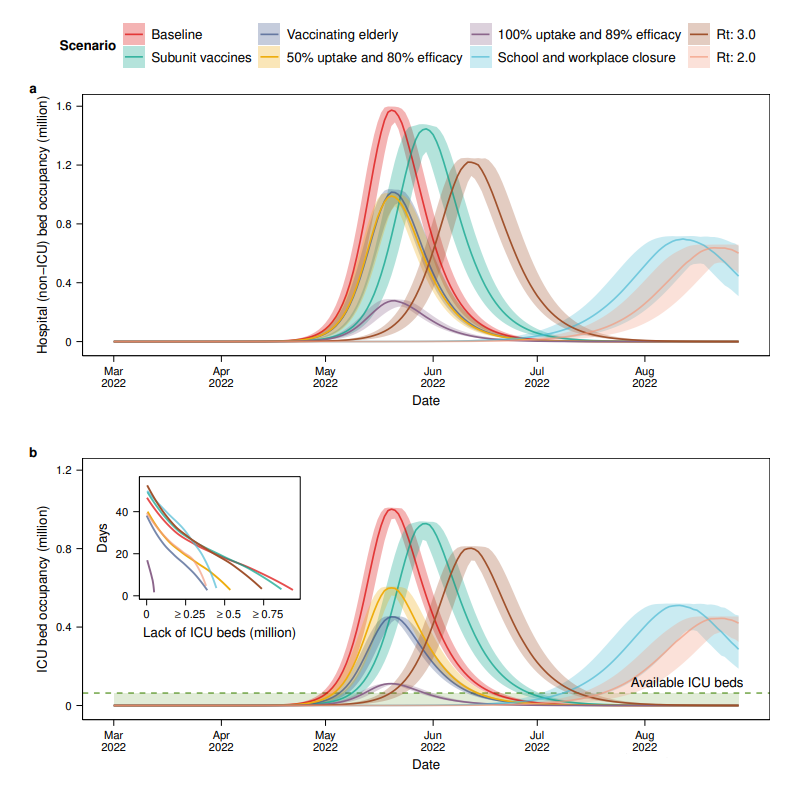
Graphic predicts Omicron transmission trend hospital bed and ICU bed occupancies from March to August 2022 in China during 2022 Omicron outbreak if dynamic zero-COVID policy hadn't been adopted.
Graphic predicts Omicron transmission trend hospital bed and ICU bed occupancies from March to August 2022 in China during 2022 Omicron outbreak if dynamic zero-COVID policy hadn't been adopted.

Graphic classifies a COVID-19 case using the Council of State and Territorial Epidemiologists (CSTE) definition.
Graphic classifies a COVID-19 case using the Council of State and Territorial Epidemiologists (CSTE) definition.
Over 86% Chinese mainland seniors are vaccinated
As of May 5, over 1.25 billion people in China, or 88.74 percent of the country's total population, had been fully inoculated against COVID-19. Nearly 216 million of them are over 60.
In addition, about 3.35 billion COVID-19 vaccine doses had been administered across the Chinese mainland, said Wu Liangyou of the National Health Commission (NHC), and nearly 757 million people, or over half of the population, had received the booster jab.
As for the senior citizens aged 60 and above – the category most vulnerable to COVID-19 – over 227 million people, or 86.23 percent of the group, had been vaccinated. Over 162 million of the Chinese seniors have received booster shots, added Wu.
Zheng Zhongwei, head of vaccine research and development at the NHC, said the data shows vaccination is highly effective for the elderly to fend off severe symptoms and death when infected by COVID-19.
00:40

A vaccination regimen consisting of three shots is an ideal immune process, according to Zheng. "It's about 98 percent effective to prevent severe symptoms after three shots, no matter what kind of vaccine you're taking."
Based on the COVID-19 situation in Hong Kong Special Administrative Region (HKSAR), the mortality rate of the elderly who complete three-shot vaccination drops as much as 74 times compared to the unvaccinated, said Zheng. Even for those who only take one shot, the death rate declines three times compared to those without vaccines.
Zheng added that more than 90 percent of the infected are above 60 with underlying diseases.
The elderly face significantly higher risks without vaccination than the younger population. The death rate due to COVID-19 among those aged over 80 is 16.48 percent while the chance of death for patients between 20-59 is just 0.27 percent, according to the Center for Health Protection of HKSAR.
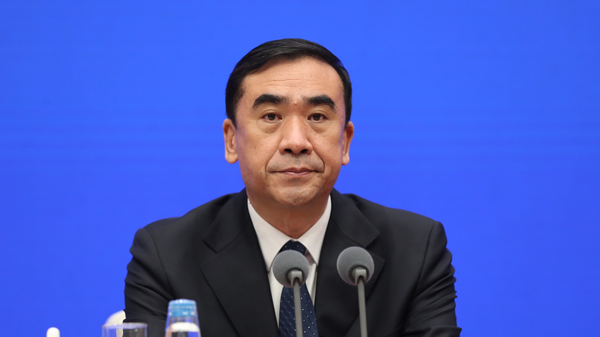
Li Bin, vice minister of the National Health Commission, at a news briefing in Beijing, China, April 29, 2022. /CFP
Li Bin, vice minister of the National Health Commission, at a news briefing in Beijing, China, April 29, 2022. /CFP
'Dynamic-zero' policy key to curb COVID-19
China's "dynamic-zero" policy against COVID-19 is key to curbing the country's COVID-19 outbreak, in line with pursuing economic progress, said a senior health official.
Li Bin, vice minister of the National Health Commission, said at a news briefing that China has stuck to the "dynamic zero" policy with targeted measures over the past two years. Successful experiences have proved that the policy is the best choice for China to maintain social and economic development.
'Dynamic zero' does not mean zero infections
Li stressed that "dynamic zero" does not mean zero infections. With the threats of Omicron and other COVID-19 variants, China cannot guarantee that no individuals will be infected with the novel coronavirus in the short term, but it is able to quickly identify and contain an outbreak once it is detected to prevent the virus from causing greater harm to the wider population.
The essence of the dynamic zero-COVID approach is early detection and quick response measures to stop the continuous spread of the virus in communities to protect people's health and lives to the greatest extent. The approach involves going all out to prevent the spread of outbreaks, sustained community-level transmission and large-scale resurgences, rather than eliminating the novel coronavirus altogether, Li added.
Read More:
Health authority: Over 1.25b Chinese people fully inoculated against COVID-19
COVID-19 vaccines greatly reduce death rate for elderly: expert
Official: 'Dynamic-zero' policy key to curb COVID-19, boost economy

